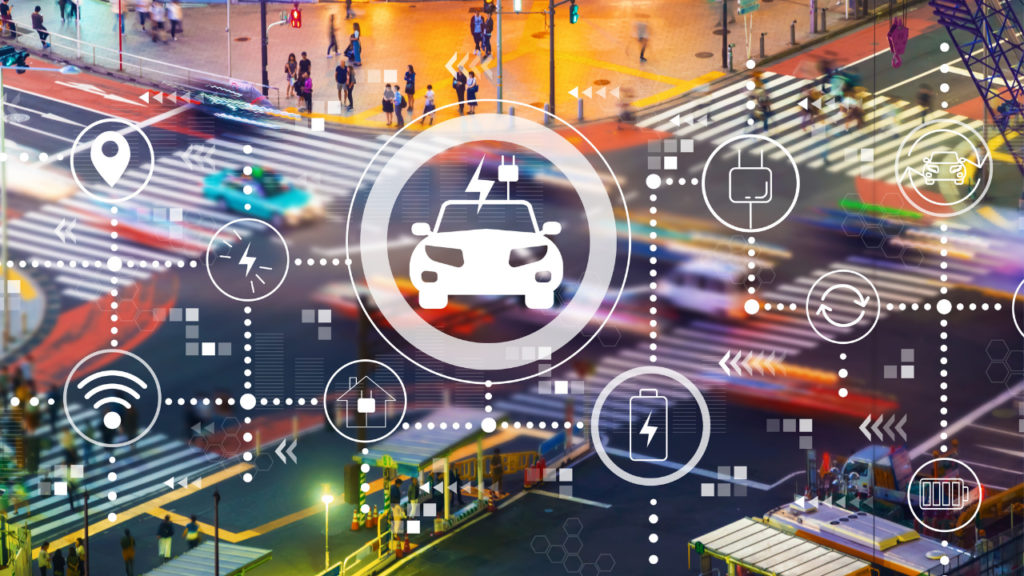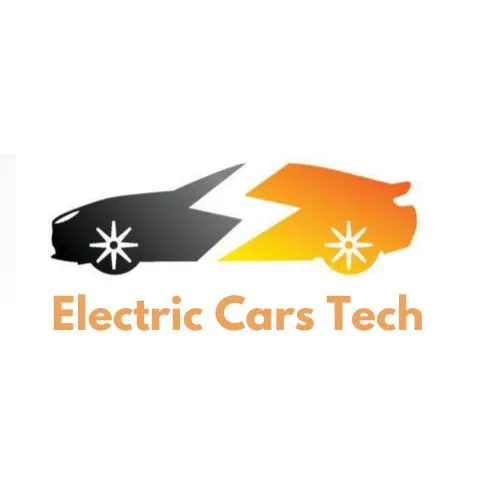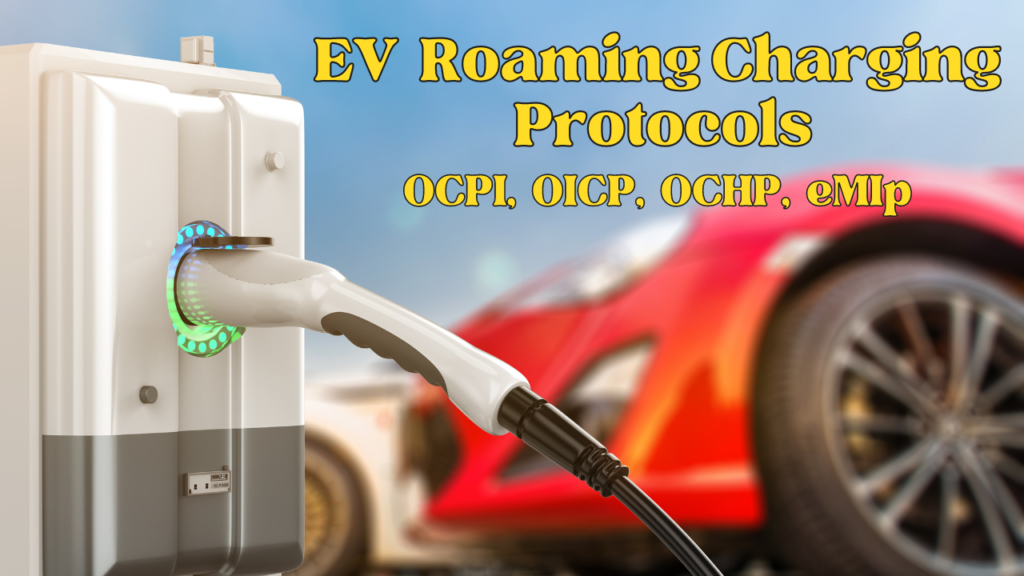EV Roaming
EV roaming refers to the ability of electric vehicle drivers to seamlessly charge their vehicles at any public charging station, regardless of the network that operates the station. Just as you can use your debit or credit card at any ATM or purchase items from different merchants, with EV roaming, you’d be able to charge your EV at any available charging station even if it’s operated by a different service provider than the one you’re subscribed to.
EV roaming can be facilitated through various means
- Interoperability Agreements: These are partnerships between different EV charging network providers to allow each other’s customers to use their infrastructure without additional subscriptions or accounts.
- Open Standards: Adopting open communication and transaction standards, such as the Open Charge Point Interface (OCPI) or the Open Charge Point Protocol (OCPP), can enable different charging networks to communicate with each other, thereby facilitating EV roaming.
- Centralized Platforms: Some companies are creating platforms where drivers can access multiple charging networks with a single account, streamlining the charging process and eliminating the need for multiple memberships.
The Benefits of EV Roaming
Increased Convenience for EV Drivers: Users don’t need multiple memberships, apps, or RFID cards to access different charging networks.
Enhanced Charging Infrastructure Utilization: With greater accessibility, more EV drivers can use available charging points, which can promote the growth of public charging infrastructure.
Promotion of e-Mobility: By making charging more convenient, potential EV buyers might be more inclined to purchase EVs, knowing that they have a broader range of charging options available.
Key players in the EV Roaming
key players in the EV Roaming ecosystem, including the roles, responsibilities, and challenges faced by Charge Point Operators (CPOs) and e-Mobility Service Providers (eMSPs). Explore the significance of Roaming Platforms and the pivotal role of Standardization and Protocol Organizations in ensuring seamless EV charging experiences.
Charge Point Operators (CPOs)
Charge Point Operators, commonly referred to as CPOs, are entities responsible for deploying, operating, and maintaining electric vehicle (EV) charging stations, also known as charge points. They play a pivotal role in the EV ecosystem, facilitating the charging process for EV owners and ensuring the widespread adoption of electric mobility.
Key Responsibilities
- Infrastructure Deployment: CPOs take the lead in setting up EV charging stations. This includes identifying strategic locations (like malls, public parking areas, highways, and more), ensuring adequate power supply, and installing the charging equipment.
- Maintenance and Upkeep: Like any other machinery, charging stations require regular maintenance. CPOs ensure the hardware remains in top condition, regularly checking and resolving any issues such as wear and tear or malfunctioning connectors.
- Software Integration: Modern charging stations are smart and connected. CPOs integrate software solutions that allow remote monitoring, user authentication, dynamic pricing, and other smart features.
- Customer Service: For any technical glitches or user queries, CPOs provide customer support. They might offer 24/7 helplines, mobile app support, or on-ground assistance.
- Billing and Payment: CPOs handle the financial transactions related to charging. They determine pricing models, process payments, and provide billing solutions, whether through RFID cards, mobile apps, or other payment gateways.
- Network Expansion: As the EV market grows, so does the need for more charging stations. CPOs continuously analyze market needs and expand their network accordingly.
- Partnerships and Integrations: To ensure a seamless charging experience, CPOs often collaborate with e-Mobility Service Providers (eMSPs) or use roaming protocols. Such integrations allow EV owners to charge at stations operated by various CPOs using a single account or app.
Challenges
- Infrastructure Costs: Setting up charging stations, especially fast chargers, can be capital-intensive.
- Interoperability: With multiple players in the market, ensuring compatibility across different charging stations, software systems, and vehicles can be a challenge.
- Electric Grid Management: High concentrations of EV chargers in a particular area can strain the local electric grid. Smart charging solutions are necessary to manage these loads efficiently.
- Vandalism and Security: Charging stations, especially those in public areas, can be prone to vandalism or theft. Ensuring security and durability is crucial.e-Mobility Service Providers (eMSPs)
Examples of Charge Point Operators (CPOs)
ChargePoint: One of the world’s largest EV charging networks, ChargePoint offers a variety of charging solutions across North America and Europe.
EVgo: Primarily located in the U.S., EVgo offers fast-charging solutions with a widespread network.
Electrify America (U.S.) and Electrify Canada: Volkswagen Group’s initiative to deploy fast-charging networks across North America.
IONITY: A joint venture between car manufacturers like BMW, Ford, Mercedes Benz, and Volkswagen to create a high-power charging network in Europe.
BP Chargemaster: Based in the UK, it’s one of the country’s leading CPOs.
Fastned: Operating mainly in Europe, Fastned focuses on rapid chargers along highways.
Enel X: Operates a broad network of chargers, particularly strong in Italy and parts of Europe.
e-Mobility Service Providers (eMSPs)
e-Mobility Service Providers (eMSPs) play a crucial role in the electric vehicle (EV) charging ecosystem. Essentially, eMSPs offer services that enable EV drivers to access and use public charging infrastructure, streamlining the process from locating a charging station to settling the payment post-charge.
Key Responsibilities
Access to Charging Infrastructure: eMSPs provide EV drivers with access to a broad network of charging stations, not just limited to a single Charge Point Operator (CPO). This is often achieved through agreements with multiple CPOs and sometimes by leveraging roaming agreements with other eMSPs.
User Interface and Experience: Many eMSPs offer user-friendly mobile apps or websites that allow drivers to locate nearby charging stations, check their availability in real-time, and even make reservations.
Payment Processing: eMSPs manage the billing and payment process for charging sessions. They often support multiple payment methods, from credit cards to digital wallets, ensuring a hassle-free experience for the user.
Customer Support: Just like any service provider, eMSPs offer support to address any issues or queries that users might have, be it related to charging, billing, or the use of their platform.
Interoperability and Roaming: To expand their service coverage, eMSPs often enter into roaming agreements, which allow their customers to charge their vehicles at stations operated by other eMSPs or CPOs without needing multiple accounts or memberships.
Data Management and Analytics: By collecting and analyzing data from charging sessions, eMSPs can gain insights into user behavior, charging patterns, and more, allowing them to optimize their services and offer tailored solutions.
Significance in the EV Ecosystem
Unified Access: One of the primary benefits of eMSPs is that they provide EV drivers with a unified platform to access multiple charging networks, removing the need to have separate accounts or memberships for different CPOs.
Facilitating EV Adoption: By simplifying the charging process and making it more user-friendly, eMSPs play a pivotal role in encouraging more people to adopt electric vehicles.
Innovation: eMSPs are at the forefront of bringing innovative solutions to the market, such as dynamic pricing, loyalty programs, and integration with other smart mobility solutions.
Challenges
Market Fragmentation: With numerous eMSPs and CPOs in the market, achieving widespread interoperability can be challenging.
Standardization: As the industry is still relatively young, there’s a continuous evolution of standards and protocols, which eMSPs need to adapt to.
Balancing Costs and Revenue: As the EV charging ecosystem involves multiple players, eMSPs must find a balance between the fees they pay to CPOs and the prices they charge their users, all while ensuring competitiveness.
Examples of e-Mobility Service Providers (eMSPs):
Plugsurfing: This platform allows users to access multiple charging networks across Europe with a single account, acting as an intermediary between EV drivers and CPOs.
NewMotion (a Shell company): Offers services both as a CPO and an eMSP in Europe.
Greenlots: Part of the Shell Group, Greenlots offers charging solutions and also operates as an eMSP, facilitating access to multiple charging networks.
EV-Box: While they manufacture chargers, they also offer a platform for users to access various charging points.
Maingau: Based in Germany, Maingau offers energy services and an eMSP platform for accessing charging across Europe.
Hubject: While not a traditional eMSP, Hubject plays a vital role in facilitating interoperability between CPOs and eMSPs with its platform.
Roaming Platforms And Aggregators
Roaming platforms have emerged as pivotal elements in the electric vehicle (EV) charging landscape, functioning as intermediaries that facilitate seamless charging experiences across different networks.These platforms act as intermediaries to enable roaming agreements between the CPOs and eMSPs. By acting as a centralized hub, they help in bridging the communication and transactional gap between various entities, ensuring that drivers can use charging infrastructure across different networks seamlessly.
Core Function
The primary purpose of a roaming platform is to connect different e-Mobility Service Providers (eMSPs) and Charge Point Operators (CPOs), enabling EV drivers to use any charging station within the interconnected network, regardless of their service provider or membership. This is akin to a cell phone user being able to use their mobile in a different country thanks to roaming agreements between telecom operators.
Key Responsibilities
Interoperability: Roaming platforms play an instrumental role in ensuring that different charging networks, which might be using diverse systems and standards, can work together harmoniously.
Expansive Access: For EV drivers, roaming platforms mean wider access to charging stations without the need for multiple accounts, apps, or memberships.
Centralized Billing: With the integration of various networks, users can benefit from a unified billing system, even if they charge their vehicles from multiple CPOs under different eMSPs.
Data Aggregation & Management: Roaming platforms can aggregate data from all integrated networks, providing valuable insights into usage patterns, peak demand times, and potential infrastructure bottlenecks.
Standardization: By acting as a bridge between various parties, these platforms often drive the adoption of common standards and protocols, making the integration process smoother.
Ease of Integration: For new eMSPs or CPOs entering the market, partnering with an established roaming platform can significantly reduce the barriers to entry, as they don’t need to negotiate individual agreements with each potential partner.
Challenges
Complex Settlements: Managing financial settlements across multiple parties with varying pricing models can be intricate.
Data Privacy & Security: With the aggregation of vast amounts of user and transaction data, ensuring data privacy and robust security measures is paramount.
Ensuring Quality: With numerous networks interconnected, maintaining a consistent quality of service and user experience can be challenging.
Examples of Roaming Platforms
GIREVE: This French platform connects EV charging service providers and operators, allowing for simplified interactions and transactions between them. GIREVE ensures that drivers have a seamless charging experience no matter which network’s infrastructure they use.
OCM (Open Charge Map): While not a roaming platform in the traditional sense, OCM provides a global, open-source database of charging stations. Integrating this database can help platforms and apps provide more comprehensive charging information to users.
AmpHub: An emerging player, AmpHub offers eRoaming solutions and focuses on streamlining access to charging infrastructure for both operators and drivers.

Standardization and Protocol Organizations
As the electric vehicle (EV) sector grows, the need for uniformity, interoperability, and efficient communication across systems becomes paramount. This is where standardization and protocol organizations come into play. They ensure that the ecosystem functions harmoniously, reducing fragmentation and enabling seamless operations.
Importance of Standardization
Interoperability: Standardized protocols and interfaces ensure that equipment from different manufacturers can communicate effectively, providing a consistent user experience.
Scalability: With standardized protocols, new systems or stations can be integrated more quickly and efficiently.
Safety: Consistent standards ensure that all equipment meets certain safety benchmarks, reducing risks associated with charging.
Economic Efficiency: Manufacturers can achieve economies of scale when producing standardized equipment, leading to reduced costs for consumers.
Protocol Organizations
IEC (International Electrotechnical Commission): A global organization that prepares and publishes international standards for electrical, electronic, and related technologies. Key standards related to EV charging include IEC 62196 and IEC 61851.
ISO (International Organization for Standardization): Responsible for various international standards, including ISO 15118, which is pivotal for vehicle-to-grid (V2G) communication.
SAE International: Originally known as the Society of Automotive Engineers, they’ve developed standards like SAE J1772 for EV charging connectors in North America.
Open Charge Alliance (OCA): A global consortium of EV infrastructure leaders that promote open standards, OCA is responsible for the Open Charge Point Protocol (OCPP), a universal method for communication between charge points and central systems.
CharIN e. V. (Charging Interface Initiative e. V.): An association founded by manufacturers working on the Combined Charging System (CCS), a standardized charging system for electric vehicles.

Popular EV Roaming Protocols
EV roaming protocols play a crucial role in the interoperability of charging networks, allowing drivers to conveniently charge their vehicles across multiple networks and regions. Here’s a list of some of the most popular EV roaming protocols:
OCPI (Open Charge Point Interface)
OCPI (Open Charge Point Interface) is an open and free protocol that facilitates interoperability between various systems and services involved in the electric vehicle (EV) charging process. Developed to address the fragmentation in the EV charging market, OCPI aims to ensure that EV drivers can easily find and access charging facilities, regardless of the networks they are registered with.
Purpose: Facilitates the exchange of information between CPOs (Charge Point Operators) and eMSPs (e-Mobility Service Providers).
Key Features: P2P (peer-to-peer) connectivity, dynamic pricing information, and real-time charge point status updates.
Communication: Typically uses JSON over RESTful APIs for data exchange.
OICP (Open InterCharge Protocol)
Purpose: Developed by Hubject, it enables e-roaming for various market players, allowing end customers to charge their EVs across different networks.
Key Features: Offers both P2P and hub-based roaming, along with location-based services.
Communication: Can employ both SOAP and JSON/RESTful API methodologies.
OCHP (Open Clearing House Protocol)
OCHP (Open Clearing House Protocol) is an open protocol designed to enable interoperability within the electric vehicle (EV) charging infrastructure. It facilitates the exchange of information among e-Mobility Service Providers (eMSPs), Clearing Houses, and Charge Point Operators (CPOs), thus simplifying the charging and billing process for EV users.
Purpose: Provides a standardized way for CPOs and eMSPs to exchange authorization, tariff, charging, and billing data.
Key Features: Designed to support asynchronous data transfer, making it suitable for batch processing of transaction data.
Communication: Typically uses SOAP for data exchange.
eMIP (eMobility Inter-Operation Protocol)
eMIP, which stands for eMobility Inter-Operation Protocol, is a communication protocol specifically designed for the eMobility sector. It focuses on enabling the interaction between different stakeholders in the electric vehicle (EV) ecosystem, such as e-Mobility Service Providers (eMSPs) and Charge Point Operators (CPOs).
Purpose: Developed by GIREVE, it aims to facilitate interoperability between different EV charging networks in Europe.
Key Features: Comprehensive protocol covering everything from CPO/eMSP discovery to transaction handling.
Communication: Uses SOAP for its data communication.

Difference Between OCPI, OICP, OCHP, eMIP
| Feature | OCPI (Open Charge Point Interface) | OICP (Open InterCharge Protocol) | OCHP (Open Clearing House Protocol) | eMIP (eMobility Inter-Operation Protocol) |
| P2P Roaming | Supported | Not supported | Supported | Not supported |
| Hub Roaming | Supported | Supported | Supported | Supported |
| Charge Point Information | Available | Available | Not available | Available |
| Authorising Charge Sessions | Supported | Supported | Not mentioned | Supported |
| Remote Start/Stop Transactions | Supported | Supported | Supported | Supported |
| Reservations | Available | Available | Not mentioned | Available |
| Smart Charging Support | Supported | Not mentioned | Not mentioned | Not mentioned |
| Billing | Integrated | Integrated | Integrated | Integrated |
| Communication | JSON/RESTful API | SOAP and JSON/RESTful API | SOAP | SOAP |
| Frequency | Real-time | Real-time | Asynchronous | Real-time |
Components and functionalities of electric vehicle (EV) charging ecosystem
P2P (Peer-to-Peer) Roaming
P2P roaming refers to a direct connection between two entities, such as two e-Mobility Service Providers (eMSPs) or a Charge Point Operator (CPO) and an eMSP, without the need for a central intermediary or hub. In this setup, these entities communicate directly with each other to facilitate EV charging for customers across their networks.
Hub Roaming
Unlike P2P roaming, hub roaming involves a central entity or hub that facilitates communication between multiple eMSPs and CPOs. This centralized platform aggregates data and services, enabling seamless charging for customers across different networks without each provider needing to integrate individually with all others.Charge Point Information
This refers to the detailed data related to a charging point or station. Information can include location (latitude, longitude), capacity (e.g., kW rating), connector types, current availability, pricing, and more. Accurate charge point information is essential for drivers to find suitable charging options.
Authorising Charge Sessions
Before an electric vehicle begins charging, the system verifies if the driver or vehicle has the appropriate permissions or credentials. This ensures secure and accountable use of the charging infrastructure.Remote Start/Stop Transactions
This feature allows for the remote initiation or termination of a charging session. It can be activated via a mobile app, a website, or a centralized management system. For instance, a user might remotely start charging their EV using an app or an operator might stop a session due to a system issue.
Reservations
Description: Allows users to reserve a charging point for a specific time slot. Reservations help in managing the demand for popular charging stations and ensure that drivers can secure a spot at their desired time.
Smart Charging Support
Description: Smart charging involves adjusting or optimizing the charging process based on various parameters like grid load, renewable energy availability, or user preferences. It can dynamically modify the charging rate or schedule to ensure efficient energy use or to leverage off-peak electricity rates.
Billing
Description: Refers to the mechanisms and processes for charging users for the electricity they consume. It includes metering the consumption, applying rates, generating bills, and facilitating payments. Different networks might offer various pricing models, such as pay-per-use, subscription, or time-based rates.
Communication
Description: This pertains to the methods or protocols used by systems to exchange information. Common communication methods include SOAP (Simple Object Access Protocol) and RESTful APIs (Representational State Transfer Application Programming Interfaces) using JSON (JavaScript Object Notation) or XML data formats. The choice of communication method affects integration, scalability, and interoperability.
Frequency
Indicates how often data is exchanged or updated between systems. For instance:
- Real-time: Data is transmitted immediately or with minimal delay. This is crucial for functions like authorizing charge sessions or remote start/stop.
- Asynchronous: Data exchange happens with a delay or at predetermined intervals, often used in less time-sensitive scenarios.
Also Read: What is Plug-In Hybrid Electric Vehicles(PHEVs), Benefits Of PHEVs, PHEVs vs. EV.
Also Read: Portable Solar EV Charger: All You Need To Know
Conclusion
The electrification of transportation has introduced a complex landscape of EV charging solutions, each requiring seamless integration to ensure user convenience. EV Roaming emerges as the linchpin to this integration, mirroring the simplicity of mobile network roaming. Its efficacy rests on the collaboration between Charge Point Operators (CPOs), eMobility Service Providers (EMSPs), and roaming platforms. Diverse EV roaming protocols, from OCPI to eMIP, offer unique advantages that cater to distinct needs, emphasizing aspects like real-time communication, dynamic pricing, data security, and smart charging.

ElectricCarsTech is a dedicated blogger with a passion for electric vehicles (EVs). Committed to bringing the latest trends, updates, and insights from the EV world, this blog serves as a hub for enthusiasts and curious minds alike. Stay charged with ElectricCarsTech and drive into the future of mobility with us.

